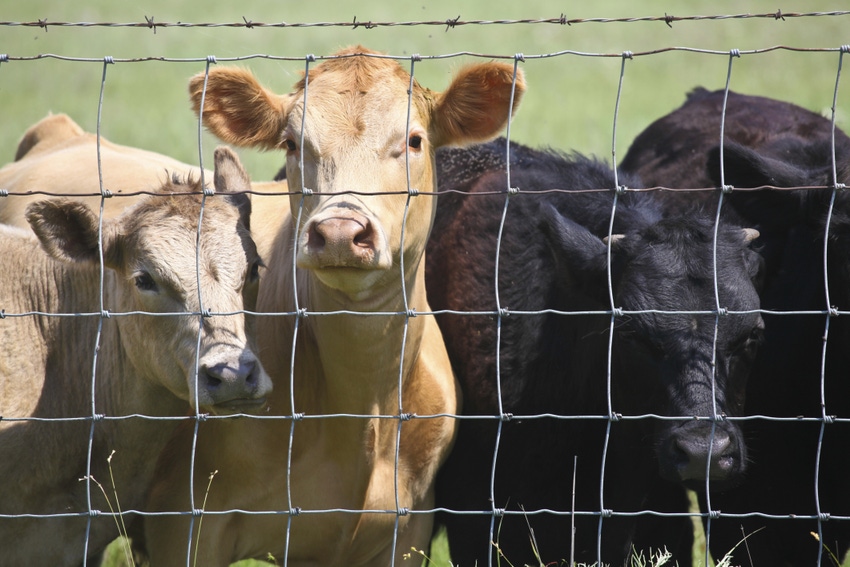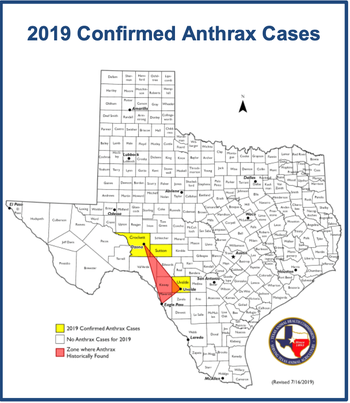Anthrax cases typically increase after periods of wet, cool weather, followed by hot, dry conditions.
July 16, 2019

The Texas Animal Health Commission (TAHC) announced that between July 9 and July 16, anthrax was detected on three premises in southwest Sutton County and one premises in south-central Crockett County, Texas. TAHC has quarantined the premises after animals tested positive for the reportable disease.
To date, animals on eight premises in three Texas counties have been confirmed with anthrax, including antelope, goats, horses and cattle. Producers have been advised to vaccinate exposed animals and instructed on the proper disposal of affected carcasses, as outlined by TAHC’s rules. Anthrax quarantines are typically lifted 10 days after vaccination or the last death loss, TAHC said.

According to the state agency, it is common to see an increase in anthrax cases after periods of wet, cool weather that are followed by hot, dry conditions. During these conditions, animals ingest the anthrax bacteria when they consume contaminated grass and hay or inhale the spores. Outbreaks usually end when cooler weather arrives.
There is an effective anthrax vaccine available for use in susceptible livestock, which includes, but is not limited to, swine, equine, sheep, goats, cattle, etc. TAHC encourages livestock owners to consult with a local veterinary practitioner and consider vaccinating livestock if owners live within the triangular area bound by the towns of Uvalde, Ozona and Eagle Pass, Texas, which is where anthrax has traditionally been found in the state. Producers may order anthrax vaccines directly from the manufacturer.
After exposure to anthrax, it usually takes three to seven days for animals to show symptoms of anthrax, TAHC said. Once symptoms begin, death will usually occur within 48 hours. Acute fever, followed by rapid death, with bleeding from body openings, are all common signs of anthrax in livestock. Owners of livestock and animals displaying symptoms consistent with anthrax or experiencing animal deaths should contact a private veterinary practitioner or a TAHC official.
Producers are encouraged to follow basic sanitation precautions when handling affected livestock or carcasses. It is recommended to wear protective gloves and long-sleeved shirts and to wash thoroughly afterward to prevent accidental spread of the bacteria to people.
According to TAHC, the Livestock Indemnity Program provides benefits to eligible livestock owners for livestock deaths caused by eligible loss conditions. Anthrax is identified as an eligible disease. For more information about the program, visit www.fsa.usda.gov/Assets/USDA-FSA-Public/usdafiles/FactSheets/2019/livestock_indemnity_program-fact_sheet.pdf.
Source: Texas Animal Health Commission, which is solely responsible for the information provided and is wholly owned by the source. Informa Business Media and all its subsidiaries are not responsible for any of the content contained in this information asset.
You May Also Like

.png?width=300&auto=webp&quality=80&disable=upscale)

